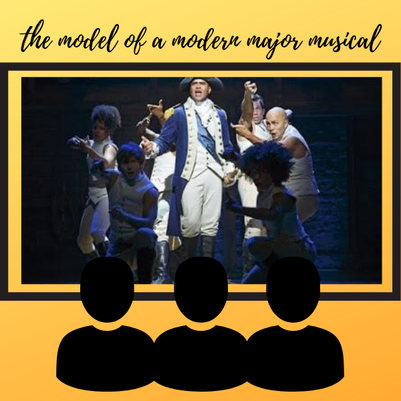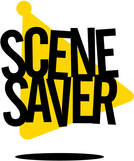|
In episode of 4 of the Filmed Live Musicals podcast, host Luisa Lyons chats with dancer and performer, and former optical engineer, Lena Wolfe about virtual and augmented reality and how it can be used in theatre today.
Lena Adele Wolfe is originally from Tucson, AZ and currently lives in NYC. She stayed in the sunny southwest city to graduate from The University of Arizona with a B.F.A in Dance and a B.S. in Optical Sciences and Engineering. Her performance credits include The Great American Dance Tour through eastern China with Art.If.Act Dance project, a yearly bout in Verlaine & McCann’s Through The Looking Glass: The Burlesque Alice and Wonderland, one performance wonder kicking off the holiday season with Saks Fifth Avenue: Theatre of Dreams and eye-high kicking Christmas in the Air at the Beau Rivage in Biloxi, MS. Before taking the plunge as a full time performing artist, Lena was an Optical Engineer on the display team for the original Microsoft HoloLens, the first consumer grade augmented reality device. She is currently investigating interactive media and digital performance spaces. Follow Lena on Instagram. For info on Lena's favorite VR experience, check out Dear Angelica on Oculus Rift. The podcast is available wherever you listen to podcasts. If you like what you hear, please rate and subscribe!
0 Comments
In case you somehow missed it, one of the most vaunted musicals in history, Hamilton was released on Disney+ on July 3rd. While Hamilton is not the first Broadway musical to be streamed online, its prominence and undeniable success may finally be shifting some very deep seated views that filmed live theatre can’t adequately capture the live experience, and that filmed live theatre should exist at all. In an unprecedented move, it was announced earlier in the month the yet-to-officially-open Broadway musical Diana, would be filmed (without an audience) and broadcast on Netflix.
Many people know by now that Disney acquired the distribution rights for the filmed live production of Hamilton for approximately $75million (the final figure was adjusted due to the pandemic and the decision to release it online rather in cinemas). Much like Hamilton and Burr, you gotta be in the room where it happens to get the figures on how much Hamilton is bringing Disney financially, but it seems to bode well. As reported in Variety, early data suggests the musical had a significantly larger audience than any other single program across Netflix, Prime Video, Hulu, Apple TV+, and Disney+ in July. Much like Hamilton and Burr, you gotta be in the room where it happens to get the actual figures on how much Hamilton is bringing Disney financially. At the end of June, just prior to the release of Hamilton, Disney+ reported it had 54.5 million subscribers (for comparison, Netflix currently has about 190 million subscribers worldwide). According to Variety, in comparison to the four weeks prior, the weekend of Hamilton’s digital release saw a 74% increase in Disney+ app downloads within the United States, and 46% worldwide. At the beginning the August, Disney+ reported it had 60.5 million subscribers. These numbers do not include subscribers who purchased subscriptions through packages or where Disney+ is included in existing apps. Going forward, there are still many questions for producers for consider: when to release filmed live productions, who gets access (due to copyright or union agreements, films may not be able to be released worldwide), if viewers should pay to access streams and for how much, how to fairly compensate cast/crew/creatives, and what platforms to use. With all that in mind, here’s a look at existing models for distributing filmed live musicals online: Free Online video platforms like YouTube and Vimeo have made it easier than ever to just upload existing footage. During the pandemic big names like Andrew Lloyd Webber and the National Theatre have released content for free online. Companies such as Southwark Playhouse, Chichester Festival Theatre, Wise Children, and Wales Millennium Centre, and independent artists like Dave Malloy and Angela Sclafani, have also made filmed live musicals freely available. The quality of free recordings varies greatly. From productions staged in black box theatres filmed with a camera on a tripod located behind the audience like Beardo, to slick captures like the arena production of Jesus Christ Superstar. Sometimes recordings were made for archival purposes, like Only the Brave and Wasted. Archival recordings vary in quality, but thanks to digital cameras, recent captures make for decent viewing. The length of time free streams are available can vary. Some are placed online indefinitely, such as The Room and Passion Project. Others, like titles from the National Theatre at Home, The Shows Must Go On, or Wise Children, have a limited window ranging from 48 hours to several weeks. Unless the producers/creatives uploading material for free are covering the cost of paying artists for use of their work on screen, cast, crew, and creatives are less likely receive any income from free streams. The exception to this is new platform SceneSaver, which encourages viewers to donate the cost of an average ticket, and shares 95% of donations directly with artists (for more info, take a listen to episode 2 of the Filmed Live Musicals podcast for an interview with SceneSaver founder Caroline Friedman). Especially during the pandemic, viewers are often encouraged to make a donation to the theatre company, or to a selected charity or organization. Paid There are several kinds of paid options: one-off payments, subscriptions, and passes. One-off payment Viewers make a one-time payment or purchase a “ticket” to gain access to the stream. The stream is often played at a scheduled time, and then is available on demand for a limited time. These films usually have a set period of availability, and are sometimes are also limited to a specific number of streams. Occasionally, as in the case of 21 Chump Street: The Musical, the payment provides indefinite access. Companies using this model include Westcoast Black Theatre Troupe, Broadway on Demand, and Streaming Musicals. Like free streams, the quality of content can vary. Particularly during the pandemic, when companies and artists are desperate for cashflow, archival footage not intended for mass consumption has been distributed. The pricing for one-off payments ranges, though is usually between $10 - $30 USD. Although it is not common, instead of a set price, viewers are sometimes given the option to make a donation, or pay-as-you-like. Subscriptions Following the Netflix model, subscriptions provide access to a catalog of shows. In the subscription model, like Netflix, titles are usually available for longer periods of time, and can appear and disappear. Most subscriptions run for a year, though some also provide month-to-month payments at a slightly higher rate. BroadwayHD, Stage, PBS, and Disney+ all currently use the subscription model. Passes Passes work in a similar way to a subscription, but often for a limited time. Prima, a theater in Lancaster, Pennsylvania, have created passes as varying price points for viewers to gain access to online content. As have SheNYC Arts, a female led organization running online festivals based in New York, Los Angeles, and Atlanta over the summer. Combinations Some companies use a combination of models. Broadway on Demand offers some content for free, some content for a one-off fee, and also plans to offer a subscription in the future. Streaming Musicals hosts free premiere nights, and titles are available to rent or buy through one-off payments. Digital Theatre offers an all-access yearly subscription, or the option to rent individual titles. While BroadwayHD offers monthly and yearly subscription models, throughout the pandemic they have been hosting free watch parties in partnership with Playbill, Roundabout, and the Rodgers and Hammerstein Organization. As live theatre online becomes more and more mainstream, and as we learn more about the number of views and profits from ticket sales, it will be interesting to see which models are adopted.
In episode 3 of the podcast, Luisa chats with the founder and artistic director of Prima, Mitch Nugent. Based in Lancaster, PA, Prima is a non-profit organization focused on invigorating lives through fresh theatrical experiences.
An experienced actor, director, and producer, Mitch has led Prima from its start in 2010 as a nomadic organization, to its own home in 2018. On the west side of Lancaster City, Prima’s new venue offers an exciting location for boutique musicals, concerts and special events. We chat about how Prima has responded to the COVID-19 crisis, what it takes to put theatre online, developing drive-in theatre, and how bootlegs are akin to medical marijuana! Subscribe to the Filmed Live Musicals podcast on your favorite app, or take a listen below. With the pandemic came a plethora of filmed live theatre content being released online. Many in the industry were genuinely surprised that audiences wanted to watch theatre on screen, and even pay for it! As discussed with Caroline Friedman - CEO of the new theatre streaming service Scenesaver - in this month’s podcast, we have been recording live theatre since the invention of the moving picture.
Despite the fact that the first live broadcast of a musical took place in 1939, and even with the release of Hamilton last month, the theatre industry as a whole is still not savvy to the history, magic, and importance of filmed live theatre. In a recent interview for The TheaterMakers Studio, CEO and Editor-in-Chief of BroadwayWorld, claimed that “very little” has happened in the world of filmed live theatre despite decades of discussions. The nearly 200 musicals in the Filmed Live Musicals database heartily disagree! And that doesn’t even include the hundreds, possibly thousands, of operas, plays, ballets, and classical concerts that have been captured and enjoyed by literally millions of people around the world! After the release of Hamilton, Jon Kamen, CEO of RadicalMedia, reportedly claimed that with the filming of RENT: Live on Broadway in 2008, RadicalMedia had "developed the nomenclature and a whole style of filming it in a very cinematic fashion.” Again, the producers of Pacific Overtures (filmed live in 1976), Into the Woods (filmed in 1991), and the cinematographers for the Met Live in HD, founded in 2006, all might have something to say about that. We still have to answer questions of when to release films, and how to fairly pay the cast, crew, and creatives, but these should not be obstacles to documenting theatre. Filming live theatre provides access to theatre for people who may not be able to see a production due to geography, cost, or disability. It is an incredible educational tool, not just for students, but for historians, industry folks, and the wider public. Digital technology has made captures easier, more dynamic, and more watchable than ever. All of this is why I started Filmed Live Musicals. As a place to catalog the musicals that have been legally captured for the screen and publicly distributed, to provide a space for people to find that content, and to show the historic value of filmed live musicals. Ultimately, it is a way to capture ephemeral moments in time so that we may enjoy them, learn from them, and remember the musicals, even when the bodies inside the now-disintegrated costumes have turned to dust.
On episode 2 of the Filmed Live Musicals podcast, Luisa chats with Caroline Friedman, founder of new theatre streaming of Scenesaver.
Scenesaver is the only website making performances from off Broadway, off- West End, small theatres, and emerging artists accessible to everyone online. It's free to register and watch with 150 shows of all genres from around the world available now. New work is being added all the time. Available on all podcast apps now! |
Archives
June 2024
Categories
All
|






 RSS Feed
RSS Feed